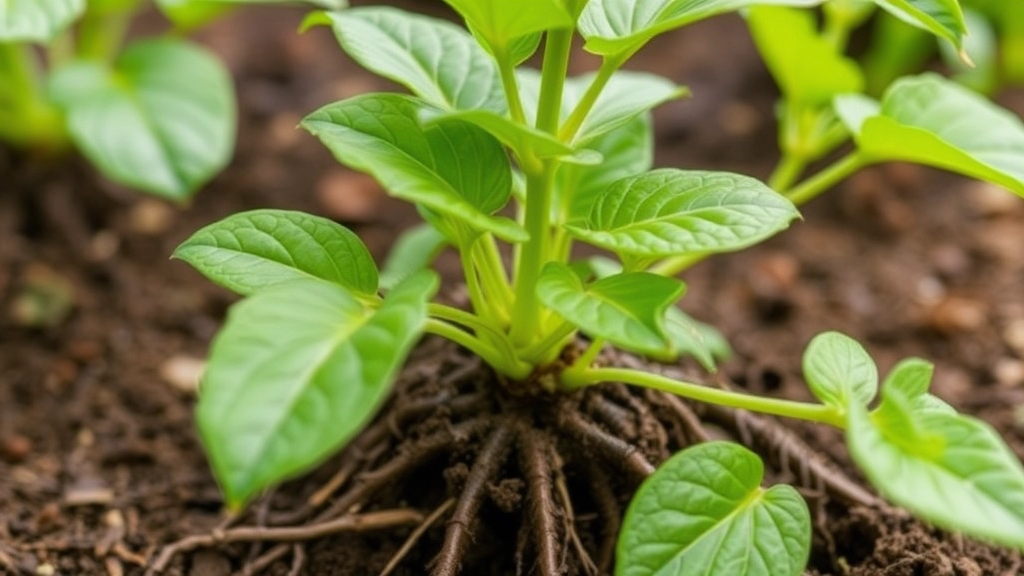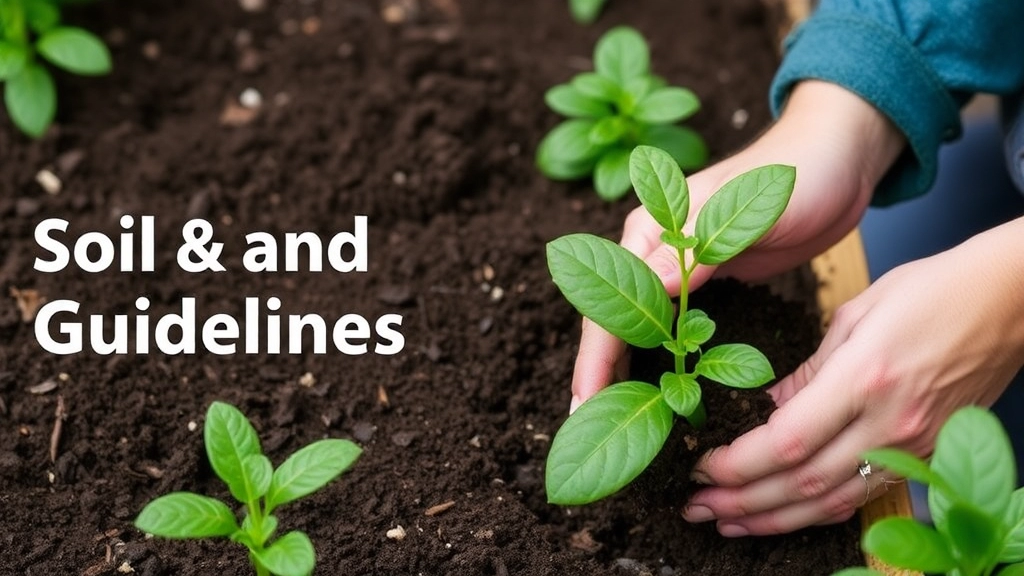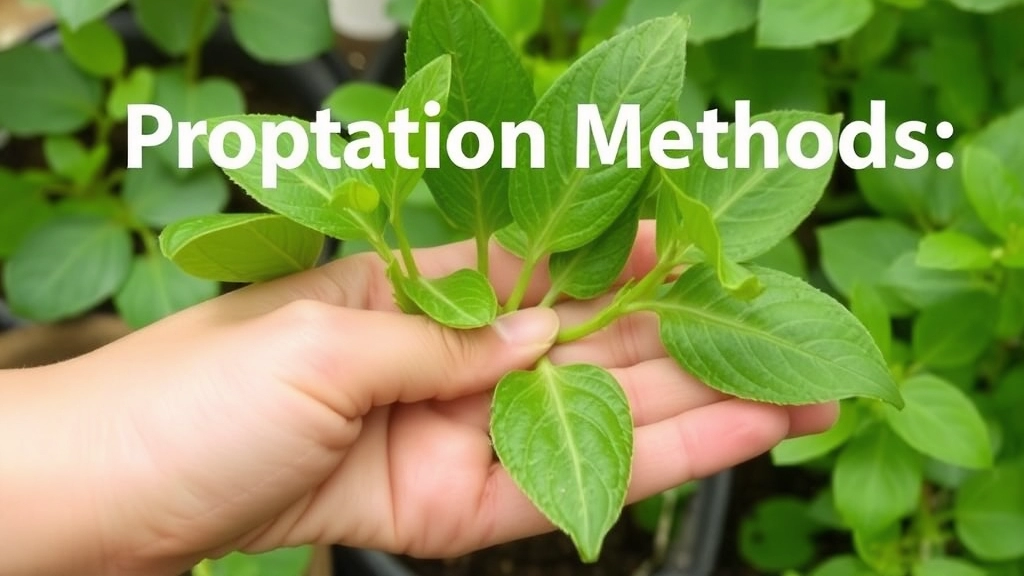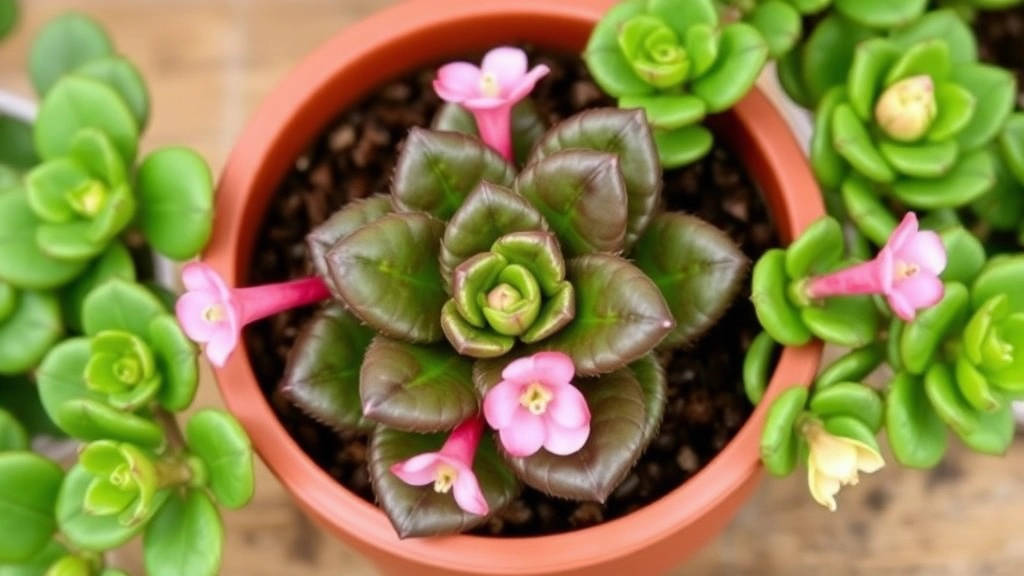Kalanchoe Panda Plant Care
If you’re looking to master Kalanchoe Panda Plant care, you’ve come to the right place. This unique succulent, known for its fuzzy, panda-like leaves, is a favourite among houseplant enthusiasts. Let’s dive into the essentials of keeping your Kalanchoe tomentosa thriving, from ideal growing conditions to troubleshooting common issues.
Watering
First off, ensuring your panda plant gets the right amount of water is crucial. Overwatering can lead to root rot, so it’s best to let the soil dry out completely between waterings.
Light
Light is another key factor; these plants love bright, indirect sunlight.
Soil
When it comes to soil, a well-draining mix is essential, and don’t forget to repot every couple of years to give your plant room to grow.
Propagation
For those interested in propagation, leaf cuttings are a simple and effective method.
Pest Management
Lastly, keep an eye out for pests and address any issues promptly to keep your panda plant in top shape.
Ideal Growing Conditions for Kalanchoe Panda Plants
Are you struggling to keep your Kalanchoe Panda Plant thriving?
Understanding the ideal growing conditions is crucial for ensuring its health and vibrancy.
Kalanchoe Tomentosa, commonly known as the Panda Plant, thrives in specific environments that mimic its native habitat.
Watering Requirements: How to Prevent Root Rot

So, you’ve got your Kalanchoe Panda Plant and you’re excited about it. But now you’re wondering, “How much should I water it?”
Let’s dive into that.
Understanding Water Needs
Kalanchoe Tomentosa, known for its fuzzy leaves and unique appearance, doesn’t need a lot of water. Overwatering is one of the quickest ways to ruin your plant.
Here’s how to keep that root rot at bay:
- Check the Soil: Always stick your finger about an inch into the soil. If it feels dry, it’s time to water. If it’s still moist, hold off.
- Watering Frequency: In the growing season (spring and summer), you might water every 2-3 weeks. In winter, you can stretch that to once a month.
- Watering Technique: When you do water, do it thoroughly. Let the water drain out of the bottom of the pot. This helps prevent water from sitting around the roots.
- Pot Choice: Make sure you’re using a pot with drainage holes. This is key to keeping the roots dry and happy.
- Signs of Overwatering: Look out for yellowing leaves or mushy stems. If you see these, cut back on the water immediately.
Keeping It Balanced
It’s all about balance. You want your Panda Plant to thrive without drowning it.
Best Light Exposure for Healthy Growth
When it comes to nurturing your Kalanchoe Panda Plant, light exposure is crucial. Many plant enthusiasts often wonder, “How much light does my Panda Plant really need?”
Kalanchoe Tomentosa thrives in bright, indirect sunlight. Here’s how to ensure your plant gets the best light:
- Optimal Light Conditions: Aim for 6 hours of bright, indirect sunlight each day.
- Avoid Direct Sunlight: Too much direct sun can scorch the leaves, causing them to lose their vibrant colour and texture.
- Indoor Placement: A south or west-facing window is ideal. If you notice the leaves stretching towards the light, it’s a sign that your plant needs more exposure.
- Seasonal Adjustments: During winter months, you might need to move your plant closer to the window, as natural light decreases.
If you’re using artificial lighting, consider full-spectrum LED grow lights, which can mimic natural sunlight effectively.
Understanding the light requirements for your Kalanchoe Panda Plant not only promotes healthy growth but also prevents issues related to insufficient light. For more tips on how to grow and care for Kalanchoe Tomentosa, check out our detailed guide here. Additionally, you can explore different varieties and care tips for Kalanchoe Tomentosa to ensure your plant thrives.
Soil and Repotting Guidelines

When it comes to Kalanchoe Panda Plants, choosing the right soil and knowing when to repot are crucial for their health and growth.
What Type of Soil is Best?
Kalanchoe Tomentosa thrives in well-draining soil. Here are some options:
- Cactus Mix: A pre-made cactus potting mix is ideal, as it allows for excellent drainage.
- DIY Mix: You can create your own by combining:
- 50% potting soil
- 25% perlite
- 25% sand
This mix ensures that excess water drains away quickly, preventing root rot.
When to Repot?
Repotting should be done every 2-3 years or when you notice:
- Roots growing out of the drainage holes.
- The plant becoming top-heavy.
- Soil breaking down and losing its drainage properties.
Repotting Steps:
- Choose the Right Pot: Select a pot that is slightly larger than the current one, with drainage holes.
- Remove the Plant: Gently take the Panda Plant out of its pot, being careful not to damage the roots.
- Inspect the Roots: Trim any brown or mushy roots with sterilised scissors.
- Add Fresh Soil: Place a layer of fresh soil at the bottom of the new pot, then position the plant and fill in around it.
- Water Lightly: After repotting, give it a light watering to help settle the soil.
By ensuring your Kalanchoe is in the right soil and repotted when necessary, you set the stage for vibrant growth and longevity.
Fertilizing Kalanchoe Tomentosa for Optimal Growth
As we explore the essential care tips for Kalanchoe Panda plants, fertilization plays a vital role in ensuring vibrant and healthy growth.
Why Fertilizing Matters
Many plant enthusiasts often wonder, “How do I keep my Kalanchoe Tomentosa thriving?” The answer lies in the right fertilization techniques. These plants benefit from a balanced diet, particularly during their growing season.
Propagation Methods: Leaf Cuttings and More

So, you’ve got a thriving Kalanchoe Panda Plant and are wondering how to expand your little green family?
Propagation is a fantastic way to multiply your plants without breaking the bank. Plus, it’s a fun project that can turn into a little green adventure!
Here are some straightforward methods to propagate your Kalanchoe Tomentosa:
Leaf Cuttings
- Choose Healthy Leaves:
- Look for plump, healthy leaves.
- Avoid any that are damaged or shrivelled.
- Cut and Dry:
- Use a clean, sharp knife to cut the leaf off at the base.
- Allow it to dry for a day or two until the cut end calluses over. This helps prevent rot.
- Planting:
- Place the dried leaf on top of well-draining soil.
- You can lightly press it down, but don’t bury it completely.
- Water Sparingly:
- Mist the soil lightly until roots develop.
- Avoid overwatering—this is key to preventing root rot.
- Patience is Key:
- In a few weeks, you should see tiny roots forming!
Offsets
- Kalanchoe plants often produce offsets or “pups” around their base.
- Gently remove these with your fingers or a clean knife.
- Let them dry for a day before planting in soil.
Seed Propagation
- This method is less common but can be done if you have seeds.
- Sow seeds in a seed tray filled with cactus mix, lightly cover, and keep moist.
- Be patient; it can take a while for seeds to germinate.
Propagation is not just about expanding your collection; it’s also a great way to share with friends or brighten up your home!
Common Pests and How to Handle Them
As we care for our Kalanchoe Panda Plants, it’s crucial to be aware of potential pests that may invade our green companions.
Troubleshooting Common Panda Plant Issues
So, you’ve got your Kalanchoe Panda Plant, and it’s looking a bit off.
Maybe the leaves are drooping, or you’ve spotted some pesky pests.
Don’t worry, we’ve all been there! Let’s dive into some common issues and how to fix them.
Yellowing Leaves
If your Panda Plant’s leaves are turning yellow, it could be a sign of overwatering.
What to do:
- Check the soil; if it’s soggy, hold off on watering for a while.
- Make sure your pot has good drainage to prevent root rot.
Droopy Leaves
Droopy leaves can mean your plant is thirsty or stressed.
Fix it by:
- Watering it thoroughly but allowing excess water to drain out.
- Ensuring it’s not in a drafty spot or exposed to extreme temperatures.
Leaf Spots
Spots on leaves could indicate a fungal issue or sunburn.
To tackle this:
- Move your plant to a shadier spot if it’s getting too much direct sunlight.
- Remove affected leaves to prevent the spread of any disease.
Pests
Pests like mealybugs or aphids can sneak in and wreak havoc.
Here’s how to handle them:
- Inspect your plant regularly.
- Use a cotton swab dipped in rubbing alcohol to remove mealybugs.
- For aphids, a gentle spray of water can dislodge them.
Wilting
If your Panda Plant is wilting, it might be thirsty or suffering from root rot.
What to check:
- Assess the soil moisture. If it’s dry, give it a good drink.
- If it’s soggy, consider repotting it in fresh, dry soil.
For more detailed care tips, check out our comprehensive guide on Kalanchoe Panda Plant care and propagation tips for Kalanchoe Tomentosa.
FAQs on Kalanchoe Panda Plant Care
What are the watering requirements for a Kalanchoe Panda Plant?
Kalanchoe Panda Plants don’t need a lot of water. Overwatering can lead to root rot. Check the soil moisture by sticking your finger about an inch into the soil. If it’s dry, it’s time to water. During the growing season, water every 2-3 weeks, and in winter, water once a month.
How can I prevent root rot in my Kalanchoe Panda Plant?
To prevent root rot, ensure you use a pot with drainage holes and water thoroughly but infrequently. Let the water drain out of the bottom of the pot. Also, be on the lookout for signs of overwatering like yellowing leaves or mushy stems.
What type of soil is best for Kalanchoe Panda Plants?
Kalanchoe Panda Plants thrive in well-draining soil. A cactus mix is ideal, or you can create a DIY mix with 50% potting soil, 25% perlite, and 25% sand.
When should I repot my Kalanchoe Panda Plant?
Repot your Kalanchoe Panda Plant every 2-3 years or when you notice roots growing out of the drainage holes, the plant becoming top-heavy, or the soil breaking down and losing its drainage properties.
What are the steps for repotting a Kalanchoe Panda Plant?
To repot, choose a slightly larger pot with drainage holes, gently remove the plant, inspect and trim any brown or mushy roots, add fresh soil, position the plant, and water lightly to settle the soil.
How can I propagate my Kalanchoe Panda Plant?
You can propagate Kalanchoe Panda Plants through leaf cuttings, offsets, or seeds. For leaf cuttings, choose healthy leaves, let them dry and callus, place them on well-draining soil, and water sparingly. Offsets can be gently removed and planted after drying, and seeds can be sown in a seed tray filled with cactus mix.
What should I do if I see yellowing leaves or mushy stems?
Yellowing leaves or mushy stems are signs of overwatering. Cut back on watering immediately and ensure the plant is in well-draining soil and a pot with drainage holes.
References
-
Kalanchoe Tomentosa (Panda Plant) Care Guide
-
How To Grow Kalanchoe Tomentosa
-
Panda Plant – How to Grow and Care Guide
